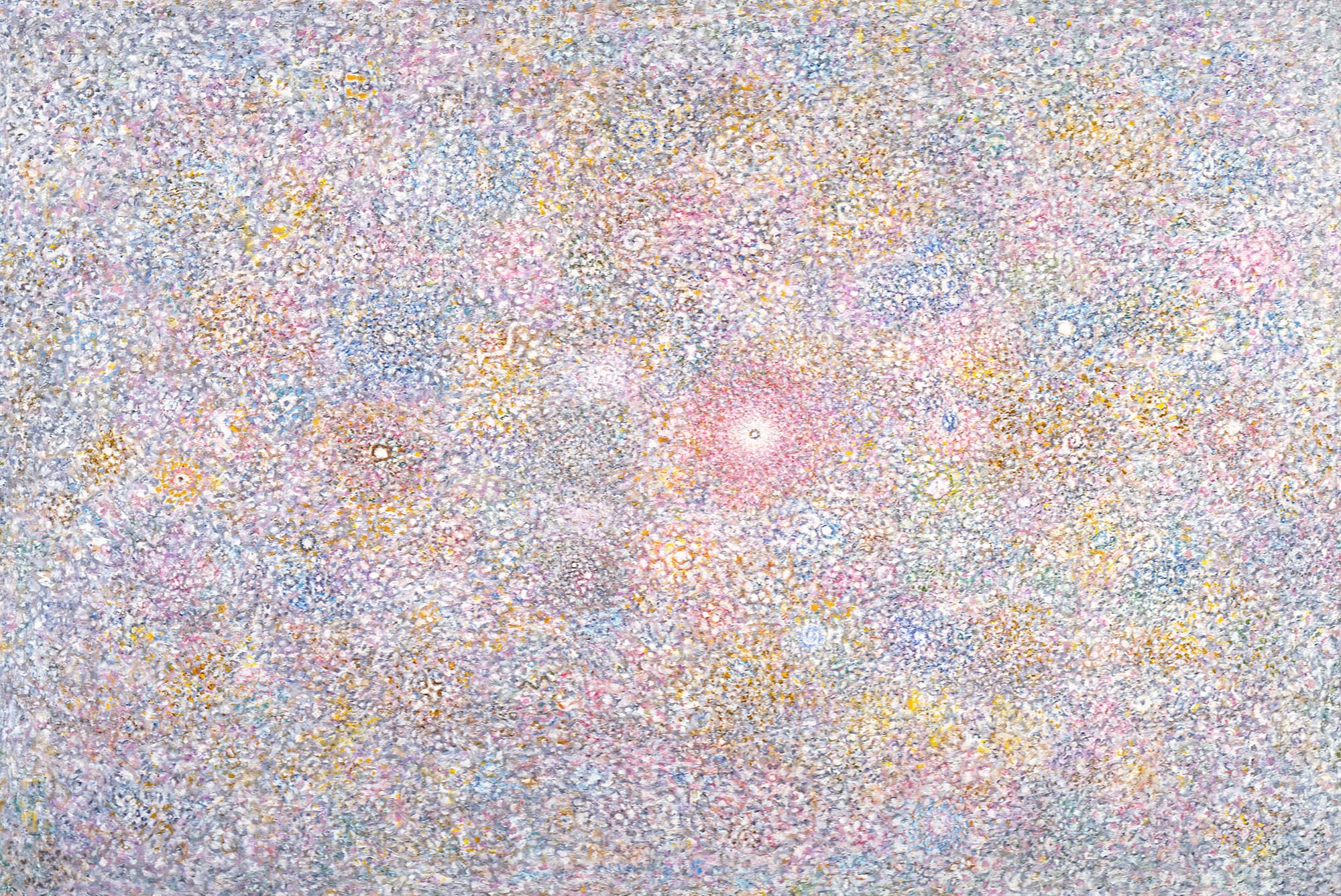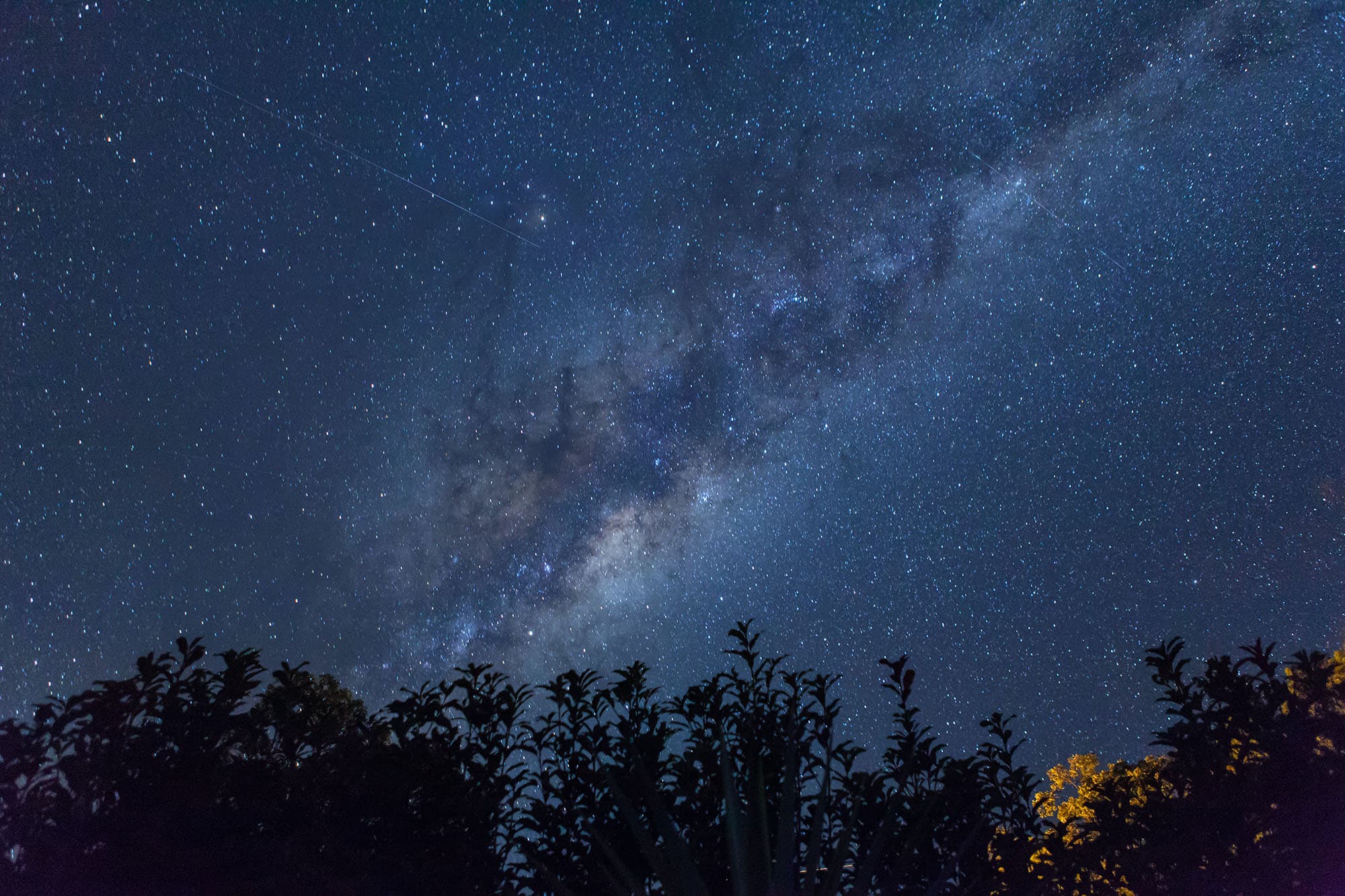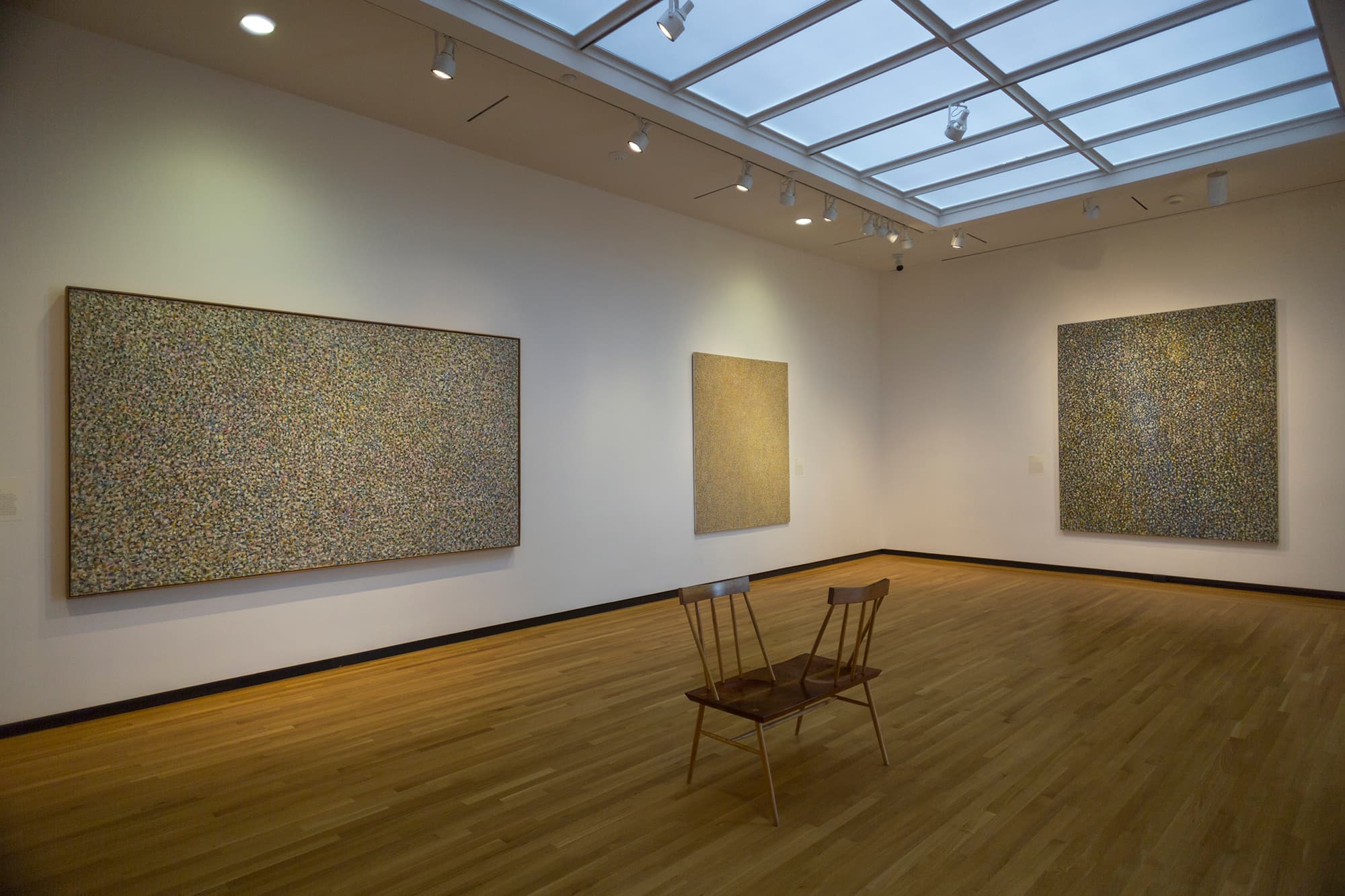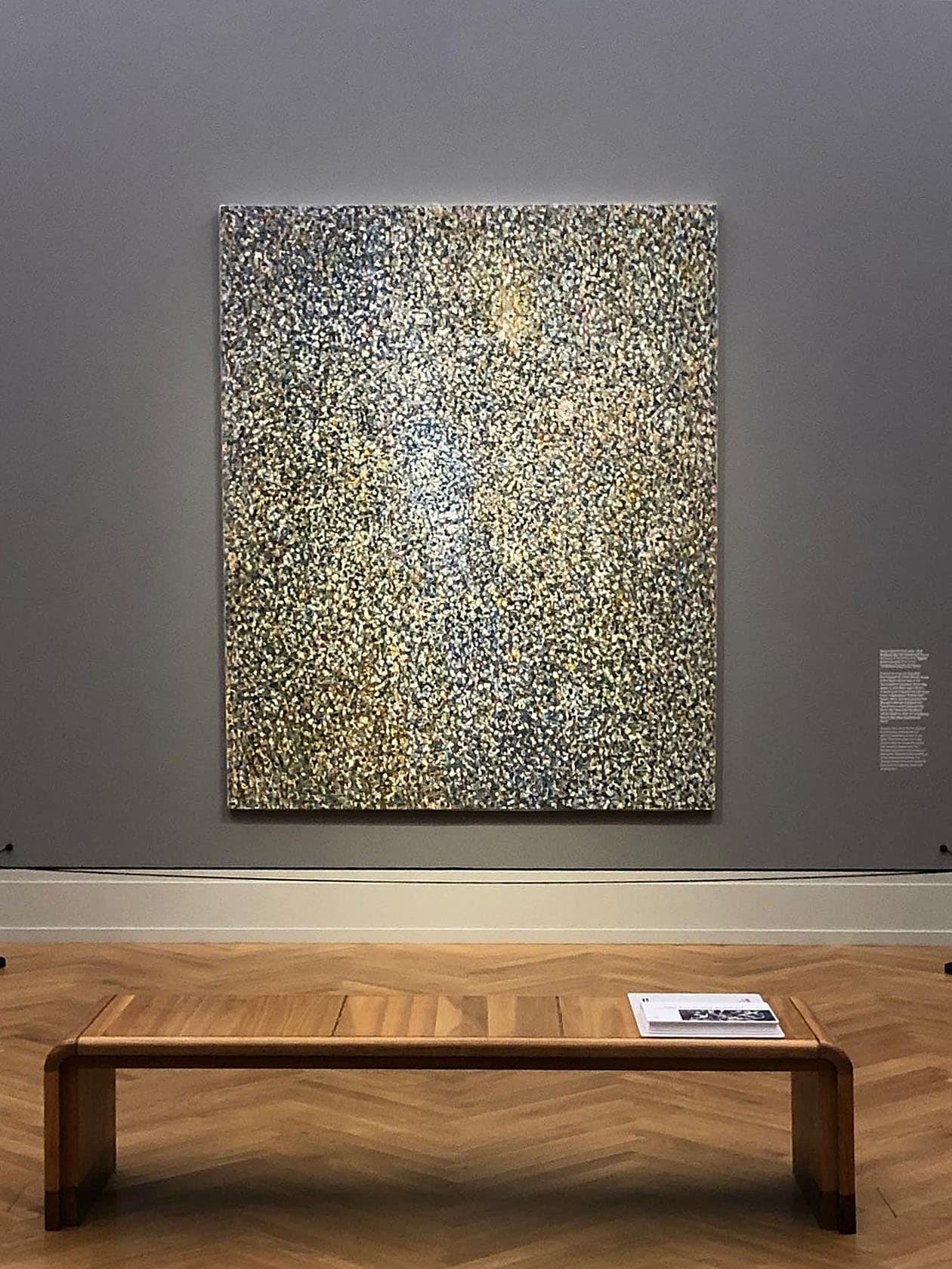In detail
Meditation on the Drifting Stars
"The ebb and flow of the organic and the absoluteness of the eternal." — Robert Hobbs

Meditation on the Drifting Stars, 1962–63, oil on linen, 95 ½ x 79 in. (242.6 x 200.7 cm)
Meditation on the Drifting Stars simultaneously conveys the transcendent and literal nature of the universe – what art historian Robert Hobbs identified in the work of Richard Pousette-Dart as “the ebb and flow of the organic and the absoluteness of the eternal.” Painted in 1962-63, it was first exhibited at the Betty Parsons Gallery in 1964 alongside other “celestial” abstractions, including Star Space, Ramapo Sky and Sky Presence, Morning. As Anne Collins Goodyear observes, “Developed during the “space age,” the paintings… both anticipate and encompass the era during which science and technology would vault human beings into the cosmic arena—which Pousette-Dart had already envisioned in his art. His testaments to this vast zone, demarcated perhaps by the sorts of liminal boundaries he intuited in his own work, are not illustrations but highly sensitive recordings that convey the pulsating forces flowing around him. The vibrant surfaces… in which light’s potency and volume clarify themselves.”

Ramapo Sky, 1963, oil on canvas, 50 ¾ x 75 ⅜ in. (128.9 x 191.5 cm) National Gallery of Art, Washington, D.C. (Gift of the Friends of the Corcoran Gallery of Art) (2015.143.21)

Sky Presence, Morning, 1963, oil on canvas, 43 1/8 x 71 in. (109.5 x 180.3 cm) Whitney Museum of American Art, New York, Purchase, with funds from the Friends of the Whitney Museum of American Art (63.53)
Such a harmonious approach in Pousette-Dart’s later works is achieved through a masterful interplay of particulars. The elemental components are multitudinous touches of paint and minute lines of ink placed and layered and combined until paintings and drawings resonate as shimmering, unified statements that, in the words of the artist, are “forever resolving and dissolving, growing and decaying, being born and dying, becoming and disappearing; form perceived through millions of points of light.” Often erroneously tethered to Pointillism, Pousette-Dart’s technique instead is entirely intuitive. A more direct corollary is his life-long engagement with photography, wherein the enlarged granular structure of film reveals that “all form is made up of so many points of light and that everything has a molecular structure. Photography was how I got to the point . . . I’m concerned with form and the nature of light, and I find that I can achieve variations in form through many touches of the brush in a way that I can’t with a single stroke of the brush.”
Overall, the light-filled Mediation on the Drifting Stars offers multiple vantages to the concept of space: expanding and converging recessional depth, and sweeping cross-sections of infinitude, both observable and seemingly beyond phenomenological measure. As such, the work can on one hand be understood as a space-age landscape, bereft of a earthly horizon line that situates traditional scale and human proportion – and human psyche – within the unfolding expanse. The slight tilt of blue pigment that bisects the overall composition suggests a galaxy viewed from an acute angle, while various small quasar-like embellishments add to the overall astronomical array.

Southern Hemisphere Night Sky, photo by Photoholgic on Unsplash
Yet on the other hand, all of Pousette-Dart’s Presence paintings, of which Meditation on the Drifting Stars is in dialogue, emphasize the process of seeing over the simple identification of external references. The viewer is compelled to shift from an analytic, linear mode of consciousness to a sensory mode that is experiential and intuitive. The meditative act of viewing is a mirror to the act of creating the painting out of many thousands of elemental parts: both are durational and unfold over time. Ultimately for Pousette-Dart, harmonious unity is situated in “a balance just on the edge of awareness, the narrow rim between the conscious and subconscious, a balance between expanding and contracting, between silence and sound.”

Richard Pousette-Dart: Painting | Light | Space, Bowdoin College Museum of Art, Brunswick, 2018

The Shape of Freedom: International: International Abstraction after 1945, Museum Barberini, Potsdam, Germany, 2022.